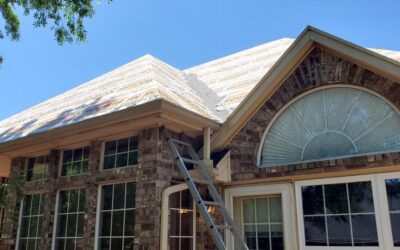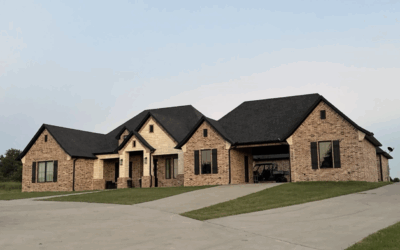How to Spot and Prevent Common Types of Storm Damage
Storms can wreak havoc on your home, leaving you stressed, overwhelmed, and uncertain about what to do next. If you’re unprepared, storm damage can severely compromise the structure of your home, leading to costly repairs. Knowing the most common types of storm damage is the first step to protecting your property and taking immediate action when disaster strikes.
Here’s a breakdown of the top storm threats and how you can safeguard your home from their destructive impact.
1. Hail Damage: The Silent Roof Destroyer
Hailstorms are among the most destructive weather events, and their damage goes beyond just roofs. When combined with strong winds, hail can dent, crack, and puncture the siding of your home, leaving it vulnerable to further damage.
If you have a shingle roof, watch for dark spots where hail has knocked off the protective asphalt granules. These areas are prone to leaks and can lead to water damage inside your home. On the siding, look for chips and cracks that weaken the exterior and reduce your home’s energy efficiency.
What to Do:
- Inspect your roof and siding after every hailstorm.
- Call a professional for a detailed inspection to assess hidden damage.
- Consider investing in impact-resistant shingles or siding to minimize future damage.
2. Wind Damage: Small Gusts, Big Problems
Don’t underestimate the power of wind. Strong gusts—especially those over 25 mph—can rip shingles off your roof, leaving it exposed to rain and further damage. Wind can also hurl debris like branches, outdoor furniture, or even smaller objects into your home, causing cracks, holes, and other structural issues.
One of the most dangerous scenarios occurs when nearby trees fall due to high winds. If you have trees close to your home, their branches or trunks can cause significant damage to your roof, windows, and siding.
What to Do:
- Regularly trim trees and remove dead branches near your home.
- Secure outdoor furniture and other items before a storm hits.
- After a storm, inspect your roof for missing shingles or damage caused by flying debris.
3. Water Damage: The Hidden Hazard
Water damage is one of the most pervasive and costly issues homeowners face after a storm. Heavy rain can seep into your home through cracks in the roof, siding, or foundation, leading to widespread issues.
Not only can water damage weaken the structural integrity of your home, but it also creates the perfect breeding ground for mold and mildew. Left unchecked, mold poses serious health risks and can spread rapidly throughout your home.
What to Do:
- Check your roof, gutters, and downspouts to ensure they are clear and in good condition.
- Inspect your basement and foundation for leaks or pooling water.
- Address any signs of mold immediately by contacting a professional.
Why Quick Action Matters
Storm damage doesn’t just affect your home’s appearance; it compromises its ability to protect you and your family from future storms. That’s why it’s crucial to act fast and address any damage as soon as possible.
Call Bailey’s Roofing and Construction Today!
If your home has been impacted by hail, wind, or water, don’t wait for the damage to get worse. Bailey’s Roofing and Construction specializes in storm damage repairs, from inspecting your property to providing top-notch solutions that restore your home’s strength and safety.
Our expert team will ensure your home is prepared to face future storms with confidence. Contact Bailey’s Roofing in Ada and Sulphur, Oklahoma, at (405) 343-8847 today! Don’t forget to follow us on Facebook for more information.



0 Comments